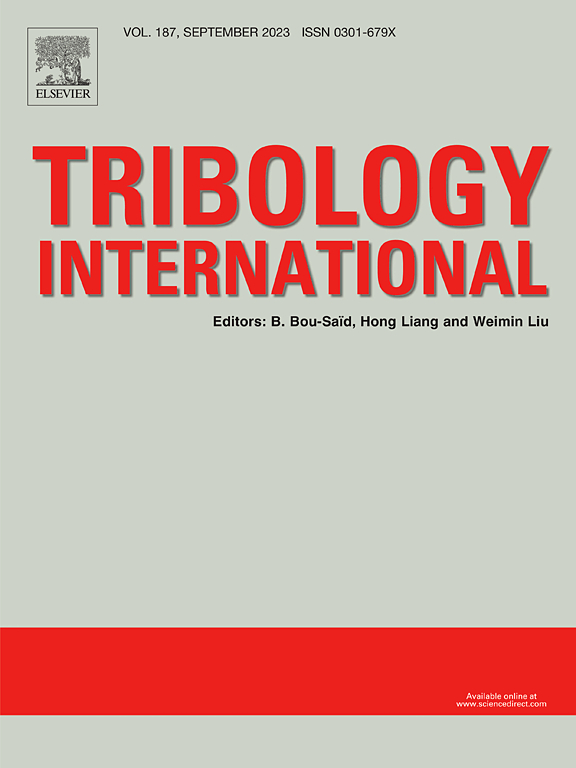Fretting fatigue analysis and strength evaluation for swage-locking pinned aluminum alloy–steel connections under tension loading
IF 6.1
1区 工程技术
Q1 ENGINEERING, MECHANICAL
引用次数: 0
Abstract
Given the early stages of widespread adoption of swage-locking pinned connections in rail vehicle structures, research on their fatigue failure behavior remains scarce. This study investigates the fretting fatigue behavior of aluminum alloy–steel connections fastened by swage-locking pins through experiments and numerical analysis. It involved fatigue experiments under tension loading, fretting wear and fatigue analyses, followed by fatigue crack initiation prediction. Results show that the contact surface of clamped plates can be divided into the stick, slip, and open zones, with fretting wear occurring within the slip zone of aluminum alloy plate. Fretting fatigue cracks typically initiate within the slip zone near the stick-slip boundary, specifically at wear scars edges. A finite element model was developed to analyze contact status and stress states of test connections, with the friction coefficient at the aluminum alloy-steel interface optimized based on measured stick zone sizes. Results show the fatigue crack initiation of test connections is predominantly influenced by tensile stresses. Consequently, the SWT multiaxial fatigue criterion, combined with the critical plane method, can be used to predict crack initiation. The predicted crack initiation sites, angles, and fatigue strengths closely matched experimental results, with errors below 20 %, 5 %, and 7 %, respectively.
挤压锁紧铝合金-钢连接在拉伸载荷下的微动疲劳分析和强度评定
由于在轨道车辆结构中广泛采用挤压锁紧螺栓连接,因此对其疲劳破坏行为的研究仍然很少。通过试验和数值分析,研究了挤压锁紧销紧固的铝合金-钢连接的微动疲劳行为。包括拉伸载荷下的疲劳试验、微动磨损和疲劳分析,以及疲劳裂纹萌生预测。结果表明:夹紧铝板接触面可分为粘区、滑移区和开区,在滑移区出现微动磨损;微动疲劳裂纹通常起源于粘滑边界附近的滑移区,特别是磨损痕边缘。建立了有限元模型,分析了试验连接的接触状态和应力状态,并根据实测棒区尺寸优化了铝合金-钢界面处的摩擦系数。结果表明:试验连接的疲劳裂纹萌生主要受拉应力的影响。因此,SWT多轴疲劳准则与临界平面法相结合,可用于预测裂纹起裂。预测的裂纹起裂位置、角度和疲劳强度与实验结果吻合较好,误差分别小于20 %、5 %和7 %。
本文章由计算机程序翻译,如有差异,请以英文原文为准。
求助全文
约1分钟内获得全文
求助全文
来源期刊

Tribology International
工程技术-工程:机械
CiteScore
10.10
自引率
16.10%
发文量
627
审稿时长
35 days
期刊介绍:
Tribology is the science of rubbing surfaces and contributes to every facet of our everyday life, from live cell friction to engine lubrication and seismology. As such tribology is truly multidisciplinary and this extraordinary breadth of scientific interest is reflected in the scope of Tribology International.
Tribology International seeks to publish original research papers of the highest scientific quality to provide an archival resource for scientists from all backgrounds. Written contributions are invited reporting experimental and modelling studies both in established areas of tribology and emerging fields. Scientific topics include the physics or chemistry of tribo-surfaces, bio-tribology, surface engineering and materials, contact mechanics, nano-tribology, lubricants and hydrodynamic lubrication.
 求助内容:
求助内容: 应助结果提醒方式:
应助结果提醒方式:


